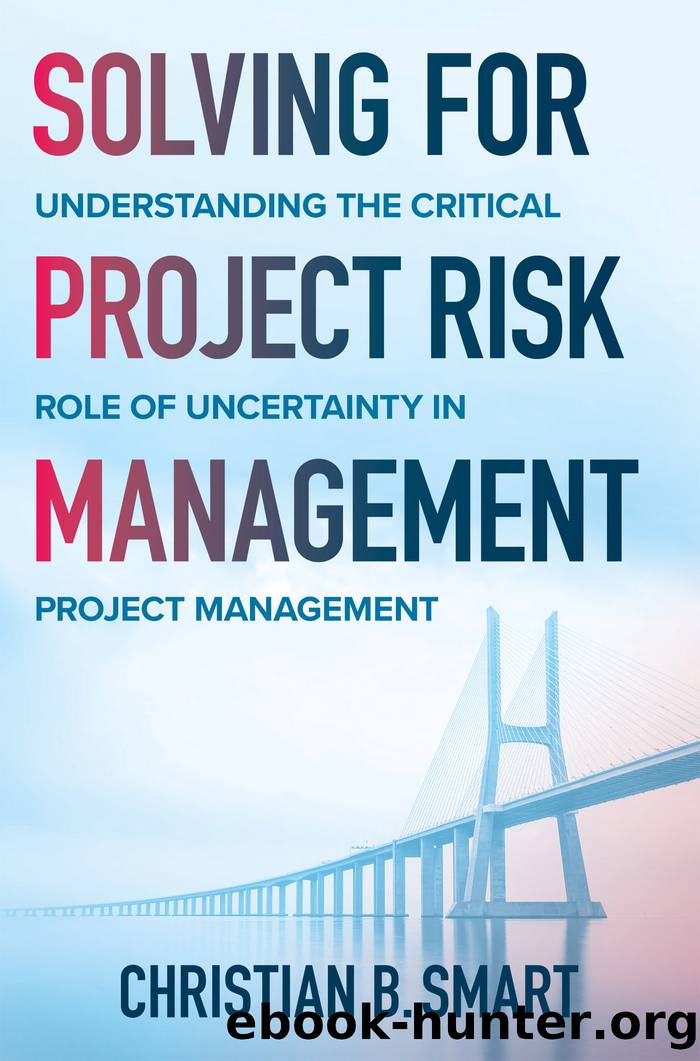Solving for Project Risk Management by Christian Smart

Author:Christian Smart
Language: eng
Format: epub
Publisher: McGraw-Hill Education
Published: 2021-02-15T00:00:00+00:00
CHAPTER 5
The Portfolio Effect and the Free Lunch
The Limits of Diversification
Most people know that the Wright brothers invented the motor-operated airplane and that Alexander Graham Bell devised the telephone. However, many people do not know that a more modern innovation that has had a significant impact on peopleâs lives started with a single individual named Harry Markowitz. An investment portfolio is the total of all the investments owned by a single individual or organization. If you invest in the stock market, have a 401(k) at work, or use the services of a financial adviser, you likely have such a portfolio. Your investments are in a portfolio to take advantage of diversification. Before the 1950s, conventional wisdom held this was not a good strategy. Most financial research was focused on identifying the single best stock and investing all your money in that company. The thinking up to that point was encapsulated by Mark Twain in his novel Puddânâhead Wilson, âBehold, the fool saith, âPut not all thine eggs in the one basketââwhich is but a manner of saying, âScatter your money and your attention;â but the wise man saith, âPut all your eggs in one basket and watch that basket!â â1 The economist John Maynard Keynes considered diversification in a large pool of investments, about which the investor had little direct knowledge, to be a âtravesty.â2 Prior to 1950, the leading publication on investing was The Theory of Investment Value, a PhD thesis written by John Burr Williams, who had prior practical experience working as a securities analyst. In his dissertation, Williams showed how to estimate the value of a stock by projecting the companyâs long-run dividend. He recommended finding the single stock with the highest expected return and buying only that particular stock.3 A best-selling investment book of the first half of the twentieth century, The Battle for Investment Survival, stated that âthe intelligent and safe way to handle (investment) capital is to concentrate.â The author of this book, who worked on Wall Street, wrote that if an investment is ânot worth following to the limit, it is not worth following at all.â Diversification was described as âundesirableâ and âan admission of not knowing what to do and an effort to strike an average.â4
Markowitz developed portfolio theory in a paper published in 1952.5 He had noticed that prior research on the selection of stocks and bonds focused solely on expected return. Markowitz realized it was important to consider the spread around the mean return and introduced the consideration of risk. One stock may be growing faster in price than another but, if it is also more volatile, that should be considered as well. For example, a technology stock may have more growth potential than the stock of a company that makes soft drinks or razor blades. However, technology stocks, especially of small, less established companies, are much more volatile and hence riskier. Markowitz noted that the combination of a variety of stocks held in a common portfolio is less risky than the most volatile individual member.
Download
This site does not store any files on its server. We only index and link to content provided by other sites. Please contact the content providers to delete copyright contents if any and email us, we'll remove relevant links or contents immediately.
Time Management Made Easy: How to Cultivate New Habits, Improve Productivity and Get Things Done by Joshua Strachan(2365)
The 7 Habits of Highly Effective People by Stephen R. Covey & Sean Covey(2096)
The Concise Laws of Human Nature by Robert Greene(1712)
Doesn't Hurt to Ask by Trey Gowdy(1555)
Primal Leadership by Daniel Goleman(1124)
Hook Point: How to Stand Out in a 3-Second World by Brendan Kane(1098)
HBR's 10 Must Reads 2021 by unknow(1044)
Don't Sweat the Small Stuff...and It's All Small Stuff by Richard Carlson(1012)
Amazon Unbound by Brad Stone(979)
100 Things Successful People Do by Nigel Cumberland(963)
HBR's 10 Must Reads 2021 by Harvard Business Review(955)
The Job Closer by Steve Dalton(936)
Master of One by Jordan Raynor(934)
Lives of the Stoics by Ryan Holiday & Stephen Hanselman(899)
Declutter Your Mind: A step by step guide to learn to control your thoughts, stop worrying, relieve anxiety and eliminate panic attacks and negative thinking by Mia Chandler(875)
The Power of 100! by Shaun King(842)
Conflicted by Ian Leslie(798)
Coders at Work: Reflections on the craft of programming by Peter Seibel(787)
The Book of Hope by Jane Goodall(743)
